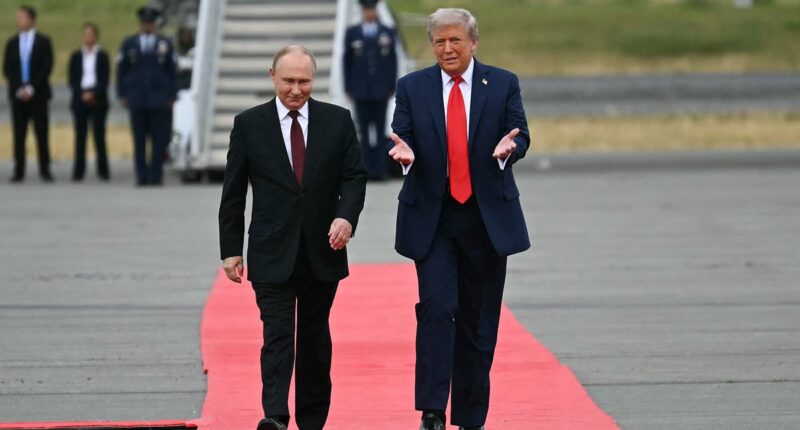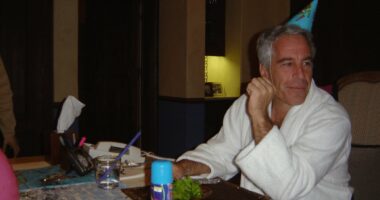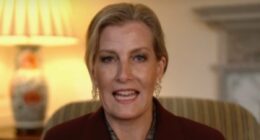Share this @internewscast.com
Donald Trump is reportedly gearing up to acknowledge Russian sovereignty over Crimea and other Ukrainian territories under occupation, aiming to forge a peace agreement with Vladimir Putin to conclude the ongoing war.
As reported by The Telegraph, insiders familiar with the discussions reveal that the former U.S. president has assigned his peace envoy, Steve Witkoff, and his son-in-law, Jared Kushner, to present this proposal to Putin in Moscow.
This strategy would represent a significant pivot in U.S. policy regarding the conflict since Russia’s annexation of Crimea in 2014. Such a move could potentially cause a rift with European allies, who have consistently dismissed peace plans that involve yielding territory.
Sources briefed on Witkoff and Kushner’s mission indicated to the publication that, “The Americans are clearly less concerned with the European stance. They suggest that Europeans are free to adopt any position they prefer.”
Recently, Russia’s president emphasized that acknowledging Russia’s territorial claims is a crucial condition for any dialogue concerning Trump’s peace proposal.
He asserted that the U.S.’s recognition of Russian control over Crimea, along with the Donetsk and Luhansk regions, would be central to the negotiation topics.
On Friday, the Kremlin confirmed it had received an amended US proposal following urgent discussions between Ukrainian and American officials in Geneva last weekend.
That meeting came after Witkoff presented a 28-point draft to Russian officials offering ‘de facto’ recognition of Russia’s control of Crimea and both occupied Donbas regions.

Donald is said to be preparing to officially recognise Russian control over Crimea and other territory it claims in Ukraine

Jared Kushner, left, and Steve Witkoff, at the White House in September. The pair are said to be travelling to Moscow to present Putin with the plan

Firefighters put out a blaze after a Russian drone struck a residential building on November 25. Trump’s move is said to be aimed at ending the war in Ukraine, which has been raging since 2022
His outline also suggested total recognition of Russian-held territory behind the current line of contact in Kherson and Zaporizhzhia after a ceasefire.
US and Ukrainian officials subsequently reworked the document into a shorter 19-point plan, described by Kyiv as less favourable to Moscow.
But people familiar with the exchange are said to have insisted that the question of US recognition has remained inside the American framework.
Ukraine continues to insist that it cannot legally hand over any part of its territory. Under the Ukrainian constitution, no president is permitted to cede land without a nationwide referendum.
In an interview with The Atlantic, Andriy Yermak, President Zelensky’s chief of staff, who helped negotiate the updated proposal, reiterated that position: ‘Not a single sane person today would sign a document to give up territory.
‘As long as Zelensky is president, no one should count on us giving up territory. He will not sign away territory. The constitution prohibits this. Nobody can do that unless they want to go against the Ukrainian constitution and the Ukrainian people.’
Yermak and Ukraine’s national security adviser Rustem Umerov are expected to travel to Florida for further talks at Trump’s Mar-a-Lago base in the coming days.
The latest American deal reportedly leaves the most sensitive sections, particularly territorial outcomes, blank, to be resolved only in a face-to-face meeting between Zelensky and Trump if that occurs.
A US offer to legitimise Russian territorial gains would place Washington at odds with European governments that have maintained a united diplomatic stance since 2014.

Vladimir Putin has insisted that territorial concessions would be key to any proposal to end the war

Ukrainian president Volodymyr Zelensky has rejected demands to give up Ukrainian territories
After a meeting of the coalition supporting Ukraine this week, its members said: ‘They were clear on the principle that borders must not be changed by force.
‘This remains one of the fundamental principles for preserving stability and peace in Europe and beyond.’
A European counter-proposal presented to the Americans is said to remove any reference to recognising Russian control and instead states: ‘Territorial issues will be discussed and resolved after a full and unconditional ceasefire.’
The European Union, the United Kingdom, the United States and most of the international community have refused since 2014 to recognise Russia’s annexation of Crimea, and they rejected its 2022 claims to the regions of Donetsk, Luhansk, Kherson and Zaporizhzhia.
Formal US recognition of Russian sovereignty over occupied territory would break with decades of American diplomatic doctrine.
Washington refused to recognise the Soviet annexation of the Baltic states during the Cold War, and that stance has often served as a reference point during the current conflict.
















